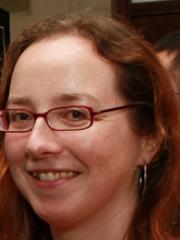Dr Julie Pearce

Researcher biography
Julie's research is mainly focussed on gas-water-rock core reactivity at reservoir conditions using experimental, field, and geochemical modelling techniques. Recent projects have been in the application of carbon dioxide geological storage in which CO2 is captured and stored in formations generally contained by low permeability cap-rock. The safe containment of the injected CO2 and the potential changes to rock porosity, permeability, and water quality should be determined. Recent and current projects with a focus on a demonstration site in the Surat Basin (Precipice Sandstone) include the impacts of impurity or acid gases present in industrial CO2 streams (collaboration with D. Kirste, SFU), inducing carbonate precipitation (in collaboration with S. Golding), and understanding dissolved metal sources and fate. Julie has also worked closely with the CO2CRC, CTSCo, Glencore, SEAL, the NSW government, CI-NSW, and ANLEC R&D, and provided expert opinion to the Queensland Government, and input to Environmental Impacts Assessments.
Julie is currently working with landholders, the QLD regional government, RDMW, councils and industry to understand the sources of methane in aquifers of the Great Artesian Basin, especailly those overlying coal seam gas reservoirs (CSG) (with Arrow Energy, SANTOS, APLNG, H. Hoffman, K, Baublys).
Other projects include gas-water-rock or acid-rock reactivity that modify nano-porosity and gas flow in gas or oil bearing shales.
Julie Pearce graduated with an MCHEM (Hons) degree in Chemistry from the University of York, UK. She then moved to the University of Bristol to complete a Ph.D. in 2007 focusing on laser spectroscopic studies to understand the detailed reaction dynamics of atmospheric processes. From 2007 – 2009 she accepted a Japan Society for the Promotion of Science Postdoctoral Fellowship, hosted at Nagoya University, Japan. There she measured delta 13C and delta 18O isotopic signatures of CO2 simultaneously in real time in the atmosphere using a laser spectroscopic technique to understand anthropogenic and biogenic sources of CO2. After taking a career break to travel in 15 countries in Asia, she moved to Brisbane in 2010 where she is enjoying the surrounding natural beauty of Queensland.


